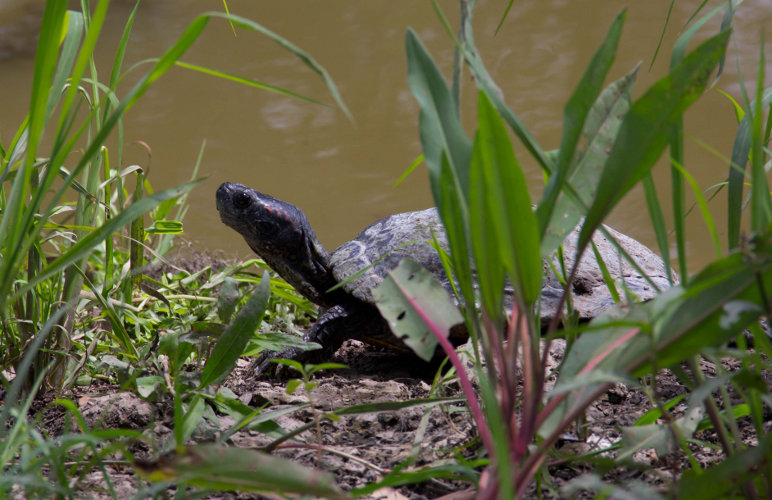April 22, 2012


Since 1900, Louisiana has lost more than 1 million acres of wetlands and barrier shoreline. In just the past 50 years, more than 1,500 square miles of coastal Louisiana disappeared. The state could lose an additional 1,000 square miles of land by 2050– an area roughly the size of Rhode Island. What is more, since the oil spill of 2010, there has been some marshland die-off in critical marine life habitat areas like Barataria Basin. (Photo courtesy of Scott Madere)
[nggallery id=171 template=carousel images=8][imagebrowser id=171]
By Debra Atlas April 22, 2012
Since 1900, Louisiana has lost more than 1 million acres of wetlands and barrier shoreline. In just the past 50 years, more than 1,500 square miles of coastal Louisiana disappeared. The state could lose an additional 1,000 square miles of land by 2050– an area roughly the size of Rhode Island.
Since the oil spill of 2010, there has been some marshland die-off in critical marine life habitat areas like Barataria Basin. Birds and animals flock to the smaller islands of Barataria to mate and give birth. These islands were heavily oiled, resulting also in partial washing away in those areas. Clean up concerns had to be balanced with the potential for causing further erosion. A lot of vegetation was removed because it was heavily oiled. Despite this, some of it has already grown back on its own.
“We walked a fine line in terms of clean-up,” says Chris Macaluso, Coastal Outreach Coordinator for the Louisiana Wildlife Federation.
Clean up can never quite turn back the clock either. Oil is bubbling up to the surface in wetlands that were cleaned during the days after the oil spill. Further restoration is needed, but getting the funding for it is a huge project.
“We have to get the Restore Act passed in Congress. It’s critical to the future of coastal restoration in Louisiana,” says Scott Madere, Communications Director for the Coalition to Restore Coastal Louisiana.
The smaller habitats are supposed to be assessed by the Natural Resource Damage Assessment process, with hopes that some of them can be restored. After the assessment process, the idea is to get BP to pay directly for those damages.
Meanwhile, the state legislature is working on a thorough, scientifically-based Coastal Restoration Master Plan. It outlines fifty years of coastal restoration efforts that are designed to reconnect the Mississippi River with the Mississippi River Delta. Madere says they are optimistic about it, and that there is little opposition to its passage from the legislature.
On the federal level, Madere believes the Restore Act, if passed, would do wonders. There is also the possibility of billions of dollars from Clean Water Act fines and penalties being awarded to Louisiana. Madere emphasizes how high the stakes are for not just Lousiana, but all of America.
“When something goes wrong here, it goes wrong for the entire country,” he says.
Preserving the integrity to the lower Mississippi River is critical to our national security and to our shipping interests. The Louisiana coast features major navigation and ports that are important to the Midwest and to areas that flow into the Mississippi River. Cargoes are shipped around the world from this coast.
Then there are the fisheries. The Gulf is among the nation’s lead areas for commercial fishing and for shrimp and crab exports.
Perhaps most importantly, Lousiana’s saltwater marsh and freshwater swamps are unique ecosystems that are not found anywhere else in the world.
“This land is precious to our culture and our identity,” says Madere.
For related articles, see: The Gulf Oil Spill, Two Years Later The Gulf of Mexico: The Crude Truth
© 2012 SCGH, LLC.
]]>